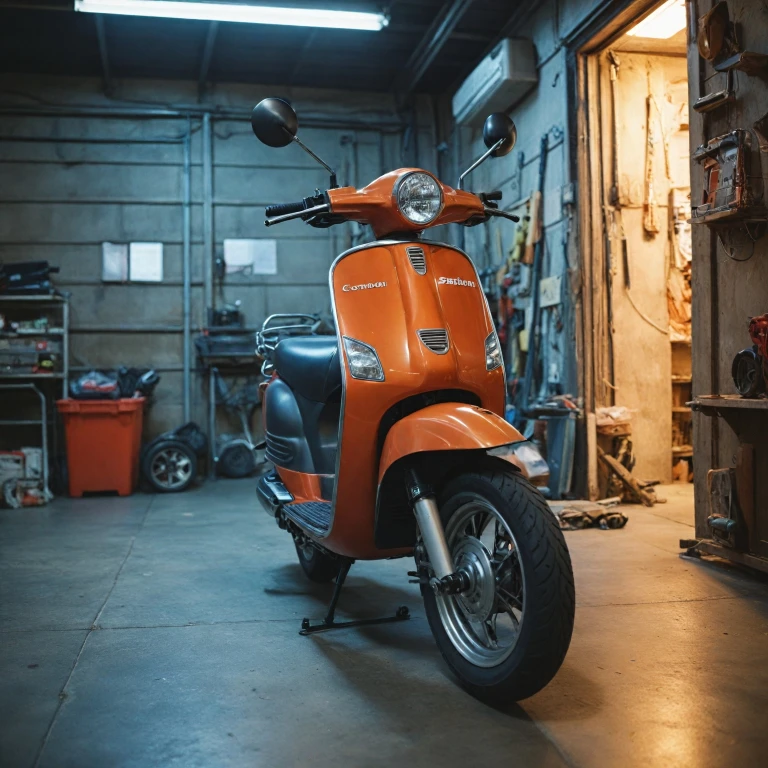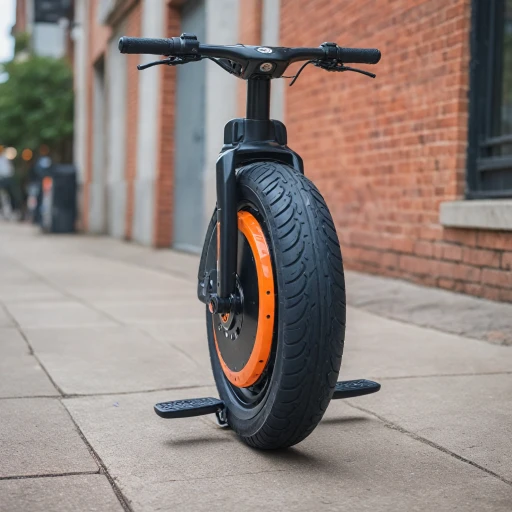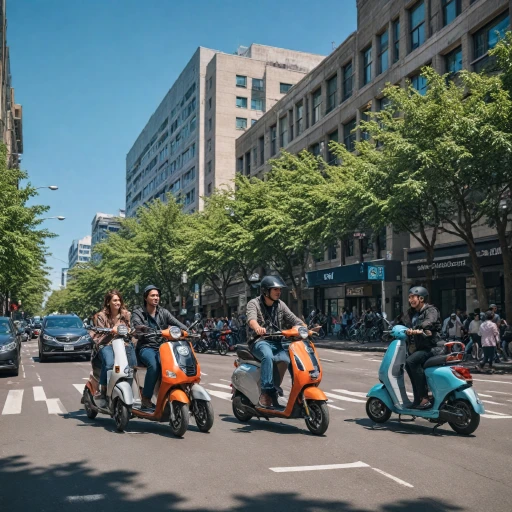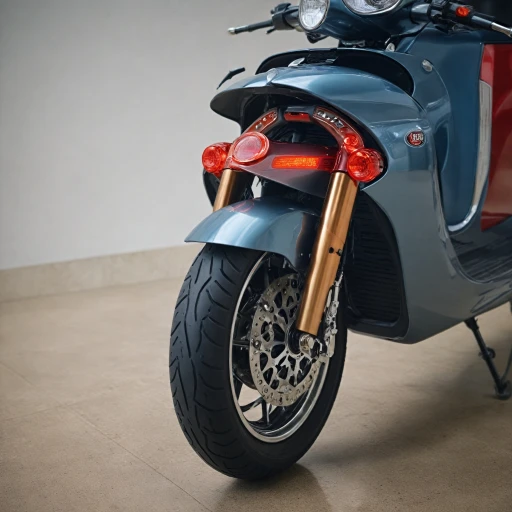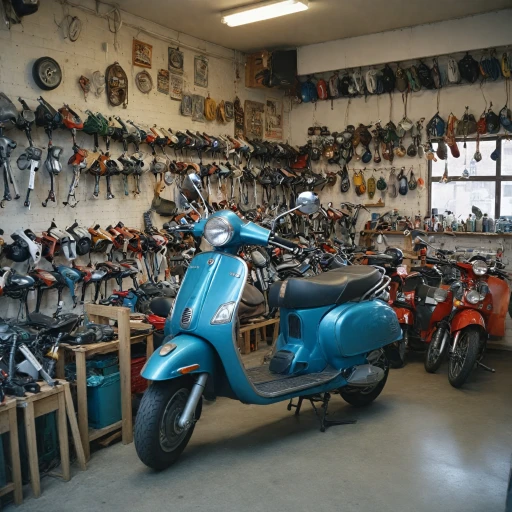Common Reasons for Non-Movement
Troubleshooting Electric Scooter Movement Failures
When your electric scooter powers on but refuses to move, the issue could stem from various underlying causes. Diagnosing these issues accurately is key to getting your scooter back on the road. Here are some common reasons that may lead to your electric scooter's lack of movement:- Battery Concerns: A scooter battery that hasn't been charged properly can often prevent movement. It's crucial to check the charger and ensure it is compatible and functioning correctly. The battery pack may not be supplying enough voltage if it’s not fully charged or if there’s a problem with the battery charger itself. For more details about charger issues and their impact, you can read about charger indicators and what they signify.
- Throttle Issues: Sometimes, a malfunctioning throttle doesn't respond as expected, which can disable the scooter's ability to move. Ensure that the throttle is not blocked or damaged, and that it has proper connectivity with the controller.
- Disconnect in Connections: Loose connections in the electric circuitry, such as wires connected to the motor controller, can lead to interruption in power transmission, making it impossible for the scooter to move.
- Circuit Breaker Problems: If the circuit breaker has tripped - often due to overload or current fluctuations - it may cut off the power needed for the motor to function. Resetting the circuit breaker might resolve this issue.
- Engaged Brake Lever: An engaged brake lever or a fault in the brake system can inhibit movement. Ensuring the brake system is disengaged and functional should be one of the first checks when facing non-movement issues.
- Motor Controller or Switch Issues: Faults associated with the motor controller or kill switch can lead to problems with power delivery and throttle response, hindering movement. Testing these components may be necessary to rule them out.
Battery and Charging Problems
Investigating Power and Charging Challenges
When your electric scooter is powered on but doesn’t move, checking the battery and charging system is crucial to diagnosing the issue. Start by ensuring your scooter battery is adequately charged. A dead battery or insufficient charge can hinder the scooter's mobility. Here are some essential steps to consider:- Verify the Charger: Plug your battery charger in to see if it's functioning. A faulty charger can lead to a battery that won't charge properly. If the charger’s light doesn't turn green, consider testing with a different charger.
- Check Battery Voltage: Use a multimeter to measure the voltage of your scooter battery. The voltage should match the specifications recommended by the scooter manufacturer. Low voltage indicates a depleted or damaged battery pack that may need replacing.
- Inspect for Loose Connections: Loose wires can disrupt the flow of power. Check connections between the battery and the motor controller, as well as between other electrical components.
- Observe the Circuit Breaker: If the circuit breaker has tripped, it may be preventing your scooter from receiving power. Reset it and try powering the scooter again.
Motor and Controller Issues
Examining the Motor and Speed Controller
If your electric scooter powers on but doesn't move, closely examining the motor and speed controller is essential. These components are pivotal in translating electrical energy from the scooter battery into mechanical motion. Firstly, it's crucial to check for any power issues related to the scooter motor. Loose connections or damaged wires could potentially interrupt the flow of power necessary for motion. For an accurate diagnosis, you may want to employ a multimeter to confirm proper voltage levels throughout the motor and speed controller system. If you notice irregularities, promptly addressing them can prevent further complications. Scooter motors also rely on the motor controller, which regulates speed and ensures smooth operation. If a scooter fails to move despite being powered on, it's beneficial to inspect the motor controller for any error codes or anomalies. In certain scenarios, the controller might incorrectly interpret signals due to issues with the throttle or hall sensors, reducing performance. A complete review of the controller and associated wiring can resolve such problems. Another consideration involves potential internal damages. Over time, usage can lead to wear and tear that affects the motor or controller's functionality. Routine maintenance can mitigate these risks—ensuring that components such as the scooter turn and throttle switch operate correctly. For more insights on how to enhance your electric scooter’s performance and address potential issues, consider exploring electric scooter upgrades. This can provide you with techniques to not only troubleshoot but also optimize your scooter for a smoother ride.Brake System Troubles
Investigating the Brake System for Mechanical Hiccups
When your electric scooter powers on but stubbornly refuses to budge, a seemingly unassuming culprit like the brake system can sometimes hold the reins of the entire scenario. Brakes might not intuitively scream 'no movement,' yet any malfunction here can directly interfere with your scooter's capability to glide with ease. An initial step in this investigative journey is to check the brake lever. A misaligned or stuck brake lever keeps engaging the brake even if you don't intend to, essentially keeping your scooter in a perpetual state of standstill. You may want to visually inspect and ensure that the lever resets fully when not in use. Checking for loose connections within the brake wiring could also uncover issues impeding mobility. The wiring, if worn out or damaged, could be sending incorrect signals to the scooter’s mechanisms, falsely indicating the need to brake. Ensuring all wires to and from the brake system are intact and properly connected is a crucial step in remediation. In certain scooters, a misconfigured electronic brake can cause surprising predicacies too. Modern scooters equipped with advanced brake recognition systems may suffer glitches leading to unnecessary braking. Here, recalibration might be necessary, aligning the brake signals with actual command inputs. Finally, take note of the circuit breaker and micro switches around the brake system. In some electric scooters, these can be tripped or stuck, causing issues similar to a constant brake engagement, effectively leaving your scooter's motor powerless to instigate movement. Does electric feel a bit too complicated? If tackling these steps doesn't resolve the stalemate, a shift towards expert consultancy might be the need of the hour. Expert assistance not only ensures comprehensive coverage of all potential issues, foregoing trial and error, but also provides a health safety check for your scooter, preventing overarching damage.Software and Firmware Glitches
Software and Firmware Challenges in Electric Scooters
When your electric scooter powers on but fails to move, software and firmware glitches might be the culprits. These issues can arise from outdated software or errors in the scooter's onboard system. Ensuring that your scooter's software is up-to-date can prevent many common problems. Regular updates often include patches that fix bugs or enhance the scooter's performance.
One of the first steps is to check for error codes on your scooter's display. These codes can provide valuable insights into what's going wrong. Consult your scooter's manual or manufacturer’s website to decode these messages. If your scooter doesn't have a display, listen for beeping patterns that might indicate specific issues.
Another potential issue is with the speed controller. This component governs the scooter's speed and communicates with the motor. A software glitch here could prevent the scooter from moving. In some cases, a simple reset of the scooter's system can resolve these issues. To reset, you may need to turn off the scooter, remove the battery pack, and wait a few minutes before reassembling and powering it back on.
Loose connections can also cause software-related problems. Inspect the wiring and connections between the controller, motor, and battery. A loose wire can disrupt the communication between these components, leading to non-movement. Tightening connections can sometimes resolve these issues.
If these steps don't resolve the problem, it might be time to consult a professional. A technician can use specialized tools like a multimeter to check for voltage irregularities or damaged circuits that might not be apparent to the untrained eye. They can also ensure that all software and firmware are functioning correctly.
When to Seek Professional Help
Recognizing When It's Time to Call in the Experts
Facing issues with your electric scooter that remain unsolved after exhausting all your DIY attempts can be frustrating. Knowing when to seek professional help is crucial to preventing further damage and ensuring your safety.- Persistent Issues: If your scooter issues persist after checking the battery, motor, controller, and brake system, it's advisable to consult a technician. Continuously riding a malfunctioning scooter can lead to more severe problems.
- Complex or Unresolved Errors: Error codes and complex electrical issues often require professional handling. A trained technician can decipher confusing error codes and test the electric circuits accurately with tools like a multimeter.
- Complicated Electrical Problems: If issues like loose connections, faulty kill switches, or problems with the speed controller and hall sensors arise, professional expertise is essential. These problems can not only impact the scooter's performance but also pose electrical hazards.
- Motor and Brake Failures: Persistent problems with the scooter motor not getting power or issues related to the brake lever can be signs of deeper mechanical concerns. Certified technicians are equipped with the necessary diagnostic tools to assess and repair serious motor or brake failures.
- Warranty Considerations: Remember, if your scooter is under warranty, tinkering with its internal components might void your coverage. Always check what your warranty covers before attempting any repairs.
